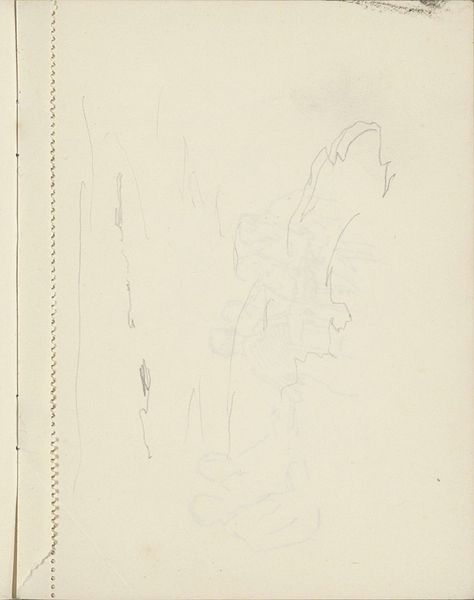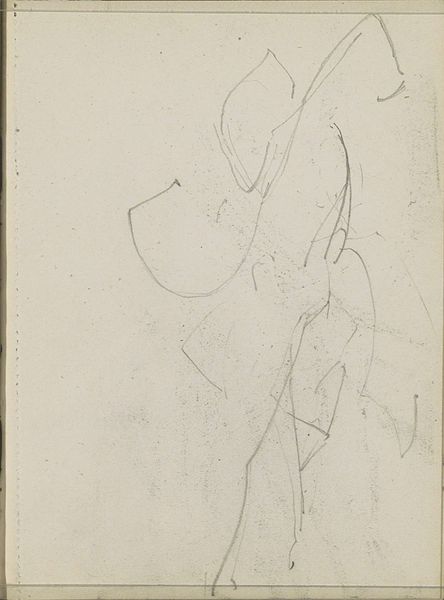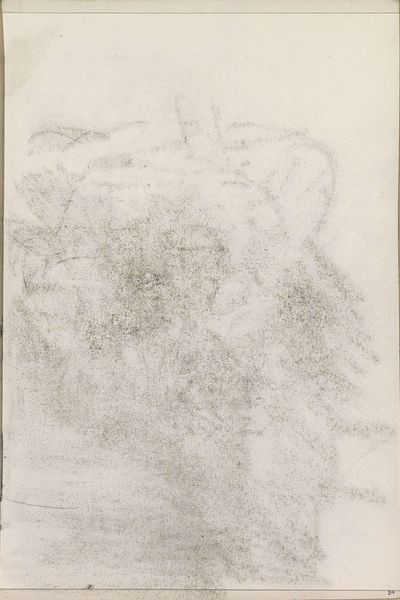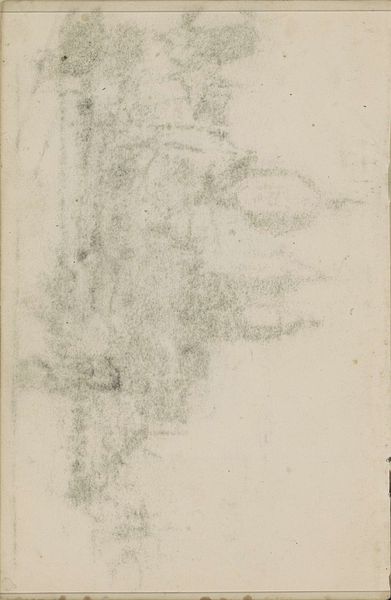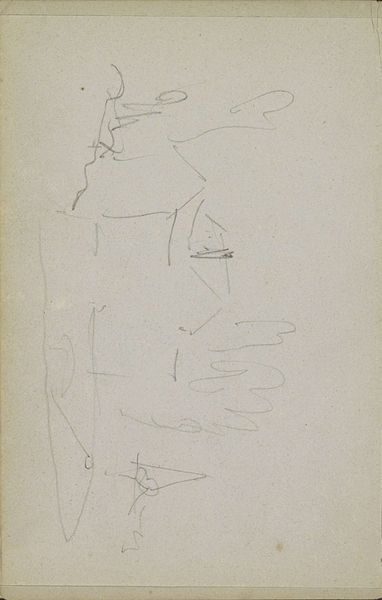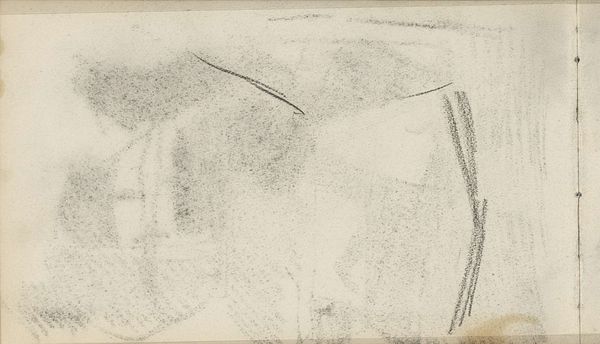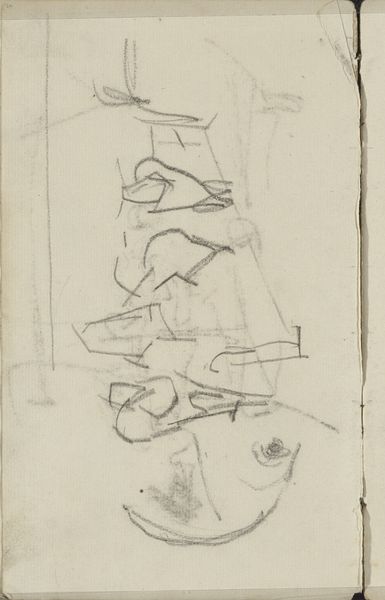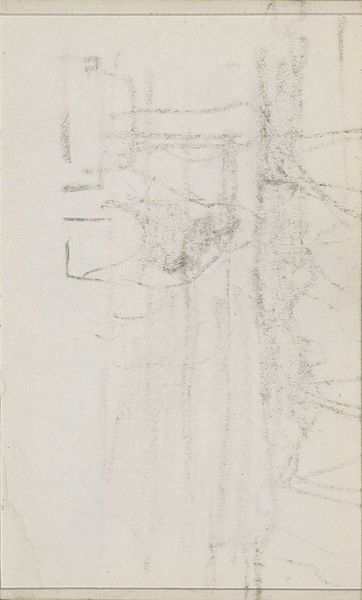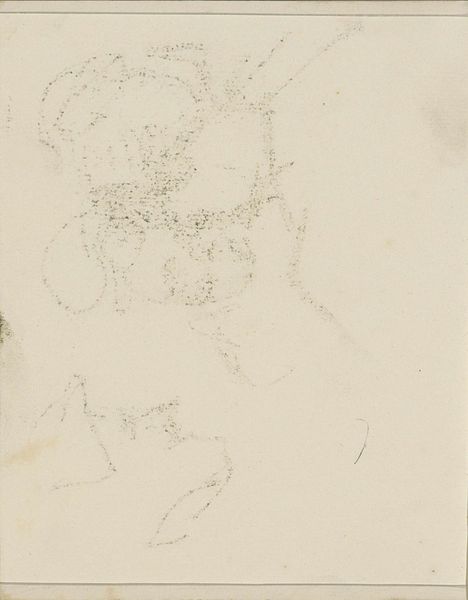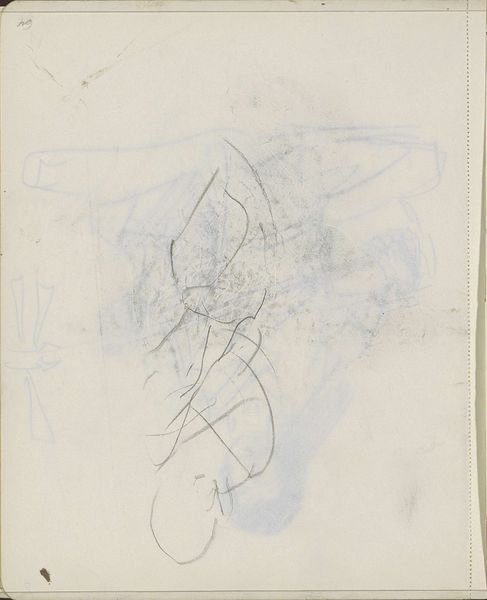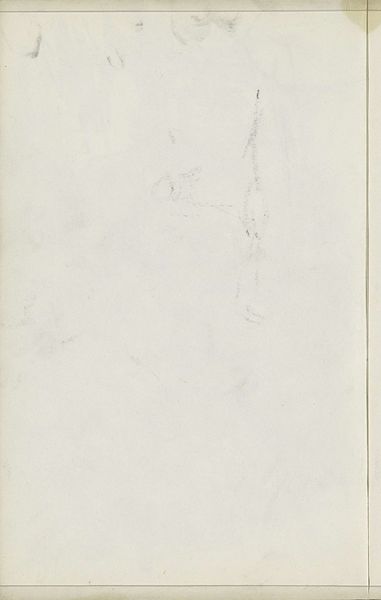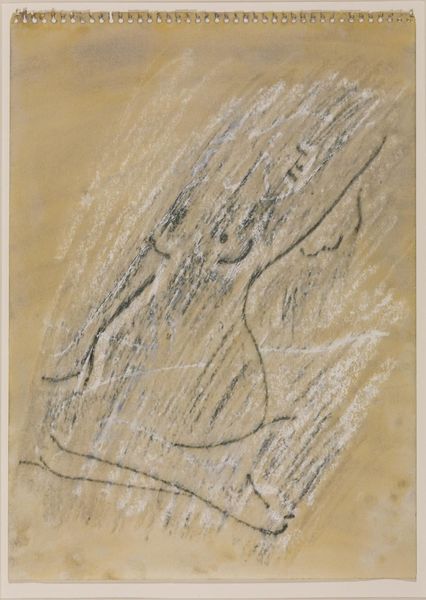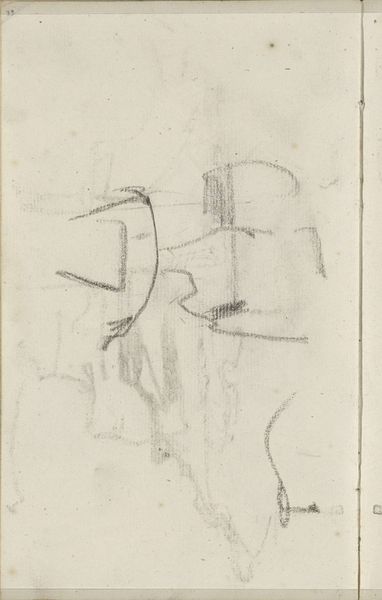
Copyright: Rijks Museum: Open Domain
Curator: Isaac Israels made this pencil drawing on paper somewhere between 1886 and 1903. It's titled, "Abklatsch van de krijttekening op pagina 60," currently held at the Rijksmuseum. Editor: At first glance, the piece feels very elusive, almost ghostlike. The lines are incredibly faint, as though the image is trying to disappear into the paper itself. It has a certain quietness. Curator: That sense of quietness probably relates to Israels' engagement with Impressionism, though, importantly, his focus diverged towards capturing scenes of urban life and leisure, making this drawing, with its apparent abstraction, a bit of an outlier within his known portfolio. It reminds us that Impressionism wasn't solely about landscapes, it became a vehicle for representing modern social dynamics as well. Editor: Right, and that shows here in its minimalist approach. It is line work that offers form rather than definitive space. The pencil's application is almost hesitant, creating broken lines that imply shape rather than defining it. It resists easy interpretation. There's an element of chance, perhaps reflecting the fleeting moments that Impressionism tried to capture. Curator: The artwork, of course, has some ambiguity. Its location on page 60 could suggest an element of process - studies that exist more for the artist than the public. In looking at Israels through the context of societal trends, it is fascinating to understand Israels position in art exhibition culture at the time - a trendsetting artist deeply influenced by French artistic developments but one that was also shaped by the socio-political dynamics specific to the Netherlands. Editor: Interesting point. For me, I still can’t shake the visual simplicity, in that, regardless of its cultural framework, I respond mostly to the textures here: the rough grain of the paper playing against the soft, smudged quality of the pencil strokes. Curator: It is those juxtapositions between materiality and form that I too find quite captivating. The artwork, I think, really urges us to ask how artists like Israels experimented with and pushed the boundaries of representation itself. Editor: Agreed. The lack of resolution becomes part of the work's own expressive quality and that perhaps becomes it’s modern sentiment.
Comments
No comments
Be the first to comment and join the conversation on the ultimate creative platform.

